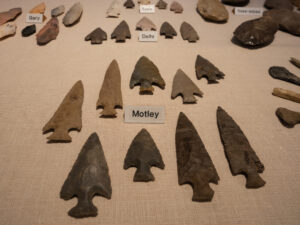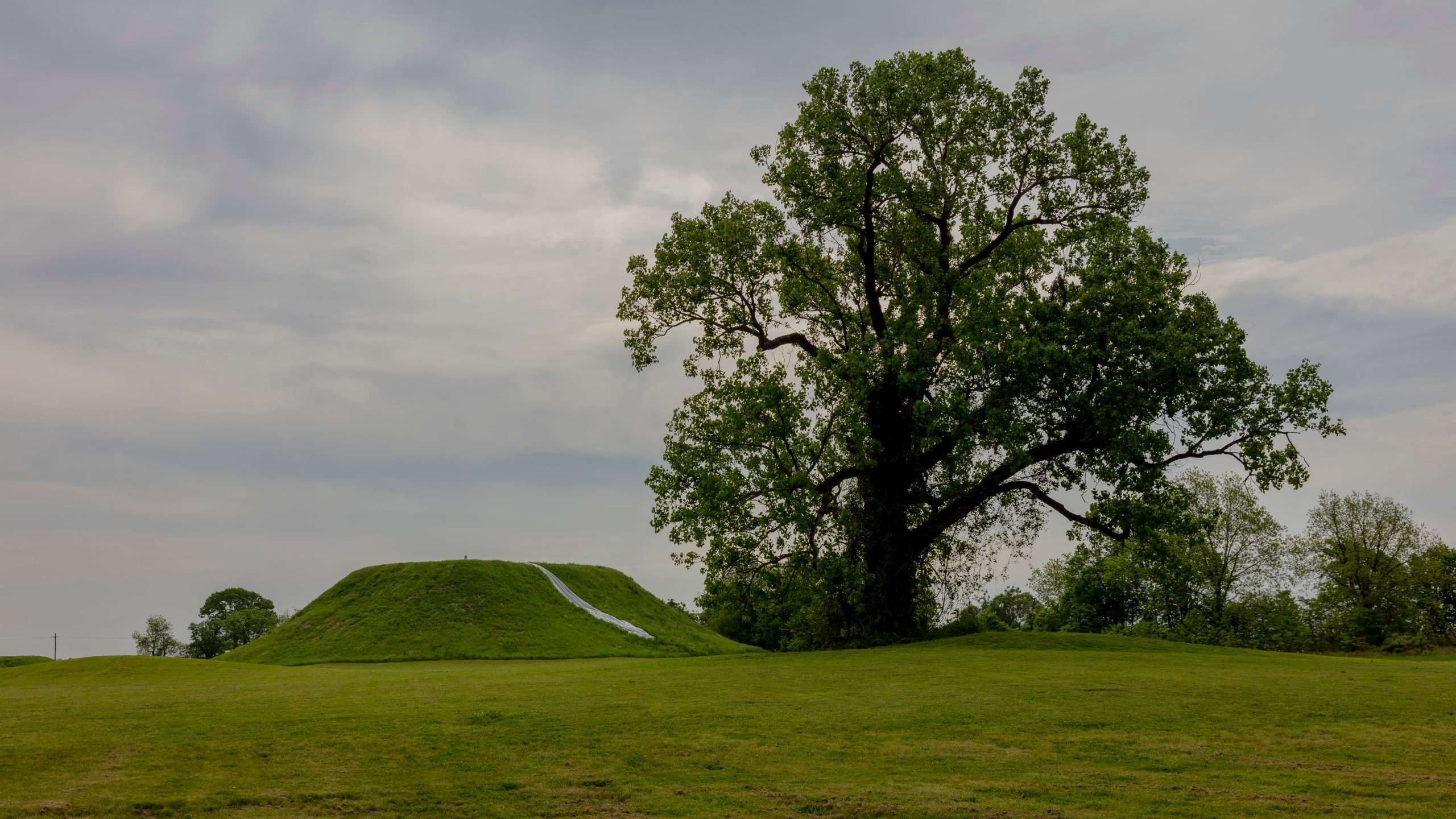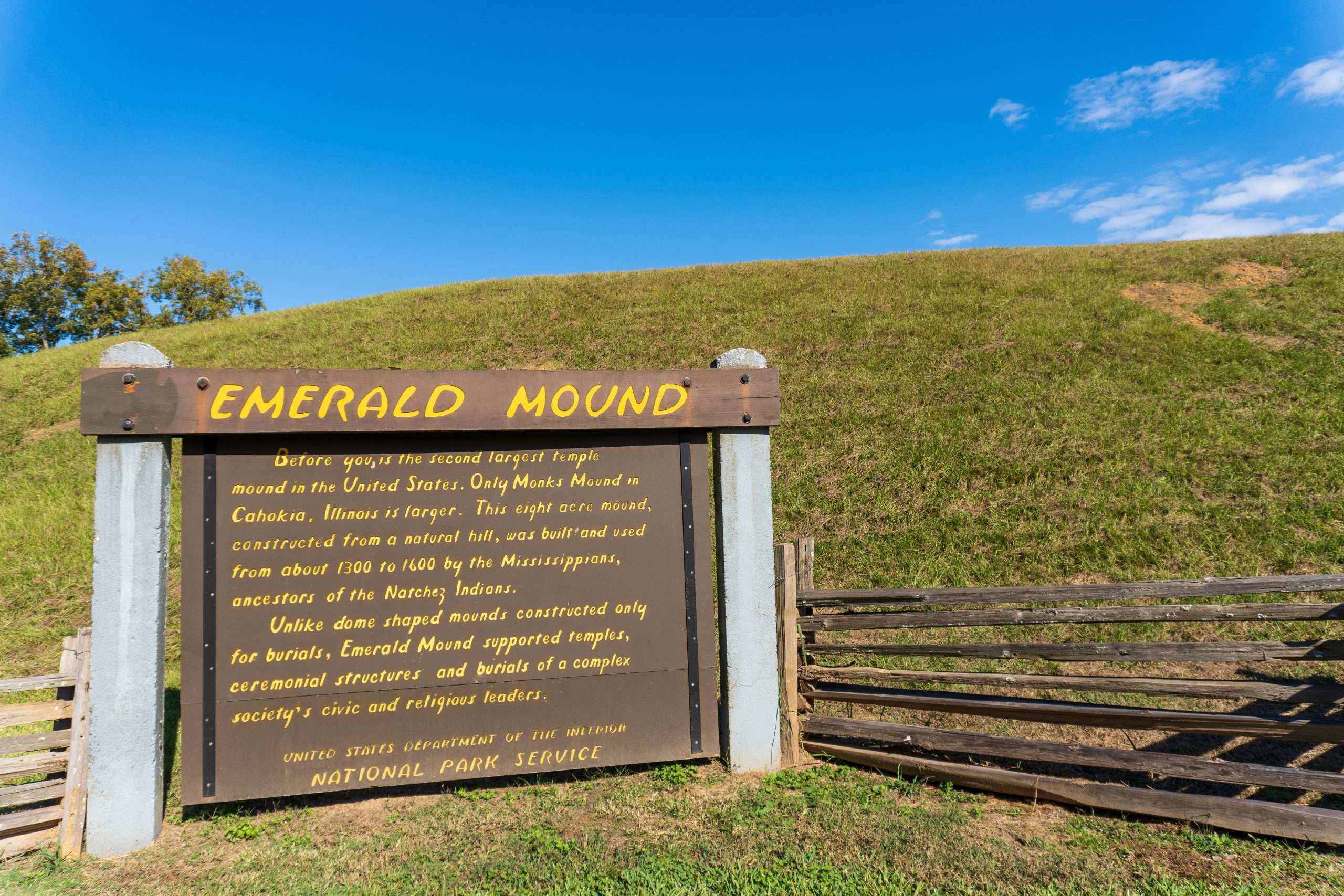Poverty Point Culture and its Relation to Mississippi during the Archaic Period
It’s hard to write about the Archaic Period and not mention the infamous Poverty Point Mound. Although it is located in modern-day Louisiana, the congregation of mounds is crucial to understanding Mississippi during the Archaic Period. The Archaic Period, spanning from around 8000 to 1000 BCE, marks a significant era in the pre-Columbian history of North America. Along with mound building, this period is known for its development of regional cultures that exhibit an increasing sophistication in social structures and remarkable technological innovations. Among these cultures, the Poverty Point culture stands out for its remarkable achievements and its profound influence on the broader region, including what is now the state of Mississippi.

Origins and Characteristics of Poverty Point Culture
The Poverty Point culture, named after the Poverty Point archaeological site located in northeastern Louisiana, flourished between 1700 and 1100 BCE. This culture is distinguished by its impressive earthworks (mound building), including large mounds and concentric ridges, which suggest a complex and organized society. The Poverty Point site itself serves as a testament to the engineering capabilities and social organization of its inhabitants.
Central to the Poverty Point culture was a sophisticated system of trade and exchange. Artifacts found at the site, such as tools, beads, and pottery, indicate extensive trade networks across the southeastern United States. Materials such as copper, soapstone, and exotic stones, which were not locally available, were traded over long distances, highlighting the interconnectedness of various regional groups.
Poverty Point’s Influence on Mississippi
 The influence of the Poverty Point culture extended into the region now known as Mississippi. During the Archaic Period, Mississippi was home to various indigenous groups that interacted with neighboring cultures, including those associated with Poverty Point. The exchange of goods, ideas, and technologies facilitated by Poverty Point’s extensive trade networks played a crucial role in shaping the cultural landscape of Mississippi.
The influence of the Poverty Point culture extended into the region now known as Mississippi. During the Archaic Period, Mississippi was home to various indigenous groups that interacted with neighboring cultures, including those associated with Poverty Point. The exchange of goods, ideas, and technologies facilitated by Poverty Point’s extensive trade networks played a crucial role in shaping the cultural landscape of Mississippi.
Archaeological evidence suggests that Mississippi was a significant part of the Poverty Point trade network. Sites within Mississippi have yielded artifacts that are characteristic of the Poverty Point culture, such as distinctive projectile points, plummets, and other tools. These artifacts indicate that the inhabitants of Mississippi not only traded with Poverty Point but also adopted some of its technological and cultural practices.
Technological and Subsistence Practices
One of the notable contributions of the Poverty Point culture to the Mississippi region was its advanced technological practices. The use of fired earth for cooking, as seen in the distinctive Poverty Point objects (PPOs), was a technological innovation that likely spread to neighboring regions, including Mississippi. These objects, often referred to as cooking balls, were used to heat food like modern-day boiling, representing a significant advancement in food preparation techniques.
 Additionally, the subsistence strategies of the Poverty Point culture, which included a diverse diet of hunted game, fished species, and gathered plant foods influenced the dietary practices of neighboring groups. The inhabitants of Mississippi, benefiting from the rich natural resources of the region, likely incorporated similar strategies, which enabled them to thrive in their environment.
Additionally, the subsistence strategies of the Poverty Point culture, which included a diverse diet of hunted game, fished species, and gathered plant foods influenced the dietary practices of neighboring groups. The inhabitants of Mississippi, benefiting from the rich natural resources of the region, likely incorporated similar strategies, which enabled them to thrive in their environment.
Cultural and Social Impact
The cultural and social impact of the Poverty Point culture on Mississippi during the Archaic Period is also evident in the construction of earthen mounds. While the monumental earthworks of Poverty Point are unique in their scale and complexity, smaller mound sites in Mississippi suggest that the practice of mound building was adopted and adapted by local groups. These mounds served various purposes, including ceremonial, residential, and burial functions, reflecting the cultural significance of mound construction.
 Moreover, the interaction with Poverty Point likely influenced the social organization of groups in Mississippi. The complexity and hierarchical nature of Poverty Point society, as inferred from its large-scale public works and trade networks, may have inspired similar social structures among neighboring communities. This interaction fostered a degree of cultural cohesion and exchange that enriched the regional diversity of the Archaic Period.
Moreover, the interaction with Poverty Point likely influenced the social organization of groups in Mississippi. The complexity and hierarchical nature of Poverty Point society, as inferred from its large-scale public works and trade networks, may have inspired similar social structures among neighboring communities. This interaction fostered a degree of cultural cohesion and exchange that enriched the regional diversity of the Archaic Period.
Conclusion
The Poverty Point culture represents a pinnacle of achievement during the Archaic Period, with its influence extending far beyond its Louisiana heartland. In Mississippi, the legacy of Poverty Point is evident in the artifacts, technological practices, subsistence strategies, and social structures that characterize the region’s archaeological record. The interconnectedness facilitated by Poverty Point’s trade networks underscores the dynamic and complex nature of prehistoric societies in the southeastern United States. As we continue to uncover and study these ancient cultures, the significance of Poverty Point in shaping the prehistoric landscape of Mississippi and beyond becomes increasingly clear, offering valuable insights into the ingenuity and adaptability of early Native American societies.
All information used for this article came from the Poverty Point World Heritage Website. Read more about Poverty Point Here.
All pictures included in this article are courtesy of Adobe Stock Images.
Read the previous article here:
Echoes of the Mississippi: Modest to Monumental, Mound Building During the Archaic Period




















